
Goat Health Essentials: Common Issues and Prevention
Simple Guide for Urban and Rural Goat Owners
Keeping goats healthy is one of the most rewarding and sometimes challenging parts of goat ownership. Whether you are caring for two pet goats in a suburban backyard or managing a small herd on a rural property, understanding basic health care makes a huge difference. Goats are hardy animals, but like all livestock, they are prone to certain issues.
In this guide, we’ll cover goat health essentials in simple terms, focusing on the big three areas every goat keeper should know about: parasite control, hoof care, and vaccinations. We’ll also discuss common signs of illness, daily prevention tips, and how to balance natural goat behavior with modern care.
Why Goat Health Matters
Healthy goats are more than just productive—they are happy, active, and easier to care for. When goats are unwell, they quickly lose condition, become stressed, and can even spread disease to others in the herd.
Urban owners may notice how quickly a goat’s mood changes when something is wrong, while rural keepers may deal with larger problems like pasture parasites or herd-wide hoof issues. Understanding the basics helps prevent small problems from becoming major challenges.
Recognizing a Healthy Goat
Before talking about problems, it’s important to know what “normal” looks like.
- Bright eyes – clear, alert, and responsive.
- Shiny coat – smooth hair or fleece with no bald patches.
- Good appetite – eager to eat hay, browse, or grain.
- Normal droppings – firm little pellets (not runny, not clumped).
- Regular movement – no limping, stiff walking, or lying down too much.
- Friendly energy – goats should be curious, playful, and active.
If you spend time with your goats every day, you’ll quickly notice when something is off. Small changes in behavior often give the first warning. In my own experience often they don’t stop making a noise when something is not right, and you have to act fast.
1. Parasite Control in Goats

Parasites are one of the most common health challenges for goats. They can live inside the body (internal parasites) or outside (external parasites). Left unchecked, they can cause weight loss, anemia, weakness, and even death.
Internal Parasites (Worms)
The main internal parasites that affect goats are stomach and intestinal worms. The most notorious is Haemonchus contortus, also known as the barber pole worm, which feeds on blood and causes severe anemia.
Signs of worm problems:
- Pale eyelids or gums (healthy goats have pinkish color).
- Bottle jaw (swelling under the jaw).
- Weight loss despite eating well.
- Rough, dull coat.
- Diarrhea (though not always present).
Prevention tips:
- Rotate pastures so goats aren’t grazing the same ground continuously.
- Avoid letting goats eat very short grass, where worm larvae gather.
- Provide browse (shrubs, tree leaves, vines), which carries fewer parasites than pasture.
- Keep shelters clean and dry.
- Perform regular FAMACHA checks (a simple eyelid color test for anemia).
Treatment:
Dewormers (anthelmintics) are used, but not on a strict schedule. Instead, treat only when needed to prevent resistance. Your local vet can recommend the right product and dosage. Natural support like garlic or herbal mixes may help, but should not replace proven worm control.
External Parasites
External parasites include lice, mites, and ticks.
Lice and mites: cause itching, hair loss, and scabby skin.
Ticks: can spread disease and cause irritation.
Prevention tips:
- Regular grooming and brushing to check for skin issues.
- Keep bedding fresh and dry.
- Isolate new goats before introducing them to the herd.
Treatment:
Special shampoos, sprays, or powders can be used under veterinary guidance.
2. Hoof Care
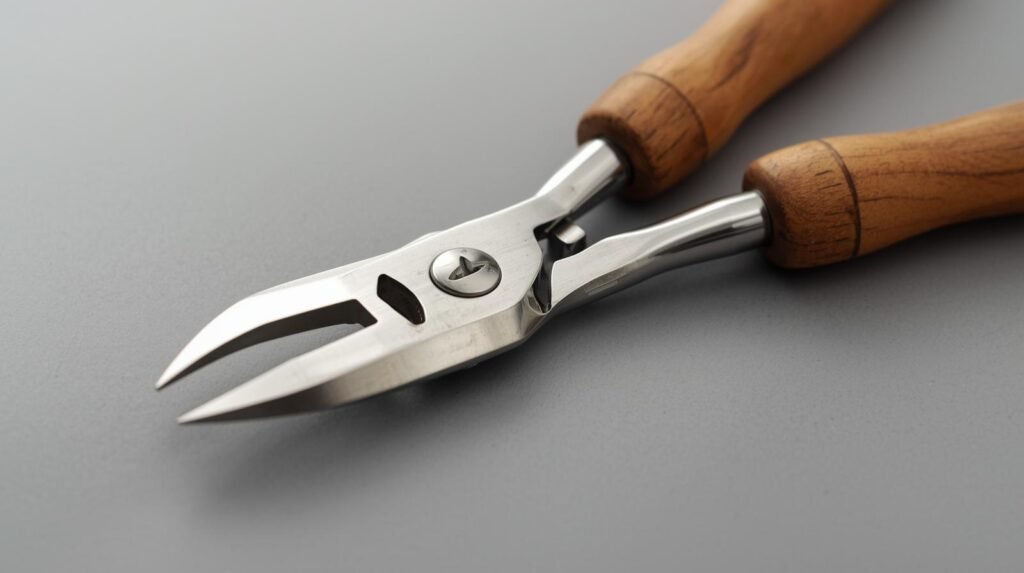
Goats’ hooves grow continuously, just like human fingernails. Without regular trimming, hooves can overgrow, curl, trap dirt, and create painful conditions like hoof rot.
Why Hoof Care Matters
Healthy hooves allow goats to walk, run, and climb comfortably. Poor hoof care leads to lameness, infections, and long-term joint problems.
Signs of Hoof Trouble
- Limping or reluctance to walk.
- Bad smell from hooves (often a sign of hoof rot).
- Overgrown, curling edges.
- Redness or swelling around the hoof.
Hoof Trimming Basics
- Frequency: Every 4–8 weeks, depending on terrain. Goats on rocky ground may need less trimming; goats in soft pastures often need more.
- Tools: Hoof trimmers (like sturdy garden pruners), a rasp (file), and gloves.
- Method: Clean the hoof, trim back the overgrowth, and smooth edges. Stop if you see pink tissue (that’s the quick).
Hoof Rot Prevention
- Keep living areas dry—mud and moisture encourage rot.
- Use lime or gravel in pens to improve drainage.
- Quarantine goats with hoof rot until treated.
Regular hoof care is one of the simplest but most important routines for both backyard and farm goats.
3. Vaccinations
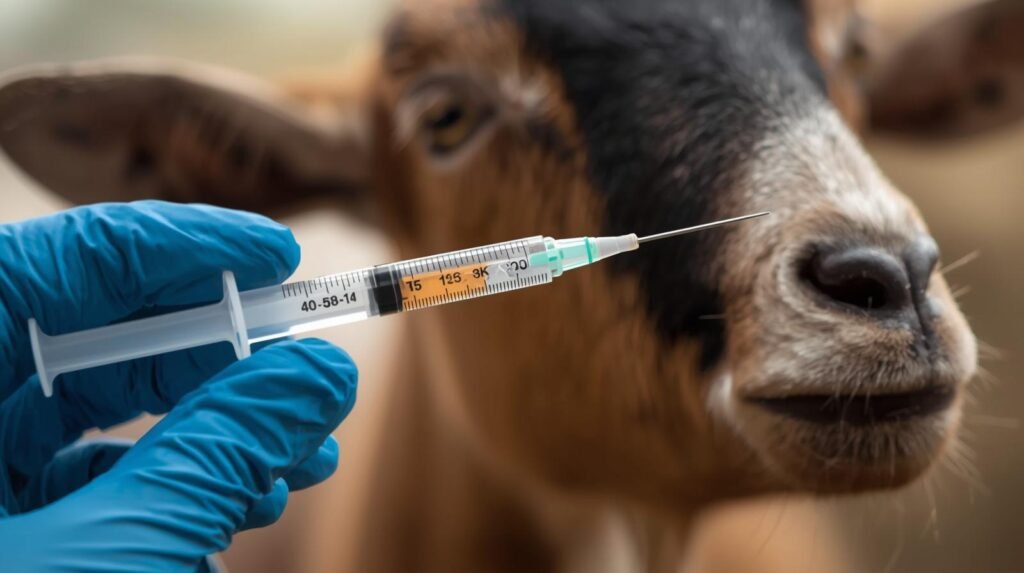
Vaccines help prevent serious, often fatal diseases. For goats, the most common and essential vaccine is CDT.
What is CDT?
CDT stands for Clostridium perfringens type C & D and tetanus.
- C & D cause enterotoxemia (“overeating disease”), which happens when bacteria in the gut release deadly toxins.
- Tetanus enters through wounds and can be fatal.
CDT Schedule
- Kids: First dose at 6–8 weeks, booster 3–4 weeks later.
- Adults: Annual booster.
- Pregnant does: Booster 4 weeks before kidding (gives kids protection through colostrum).
Other Vaccines (depending on location and vet advice)
- Rabies (in areas where it’s a risk).
- Pneumonia vaccines.
- Caseous lymphadenitis (CL) vaccines.
Always consult a vet for the right vaccination plan in your region.
4. Nutrition and Daily Prevention
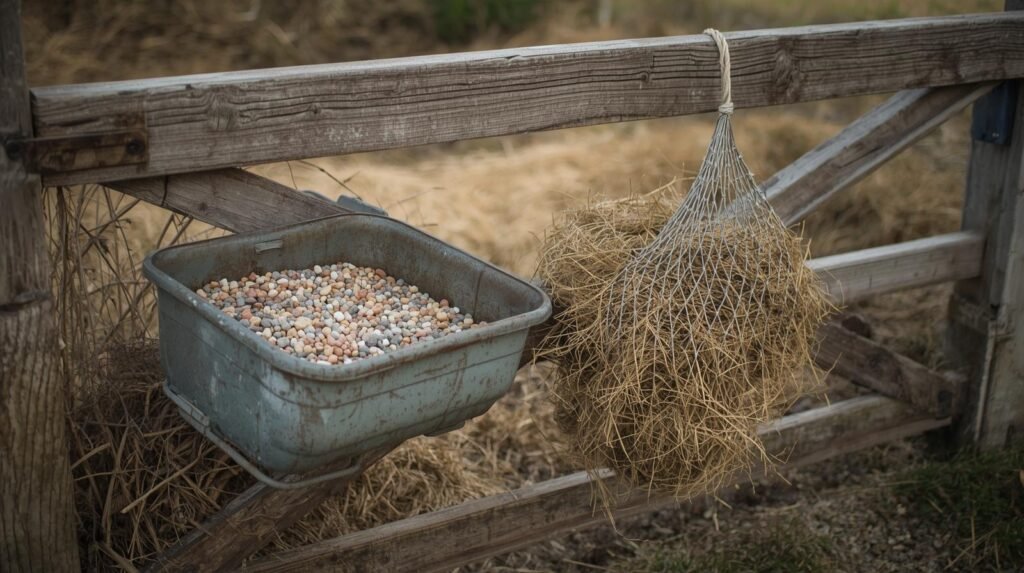
Healthy goats start with proper nutrition and basic daily care.
Balanced Diet
- Forage first: Hay, browse, and pasture should be the main diet.
- Grain: Only as a supplement (too much can cause bloating or enterotoxemia).
- Minerals: Provide a goat-specific loose mineral mix, not just a salt block.
- Clean water: Goats need constant access to fresh water.
Shelter and Cleanliness
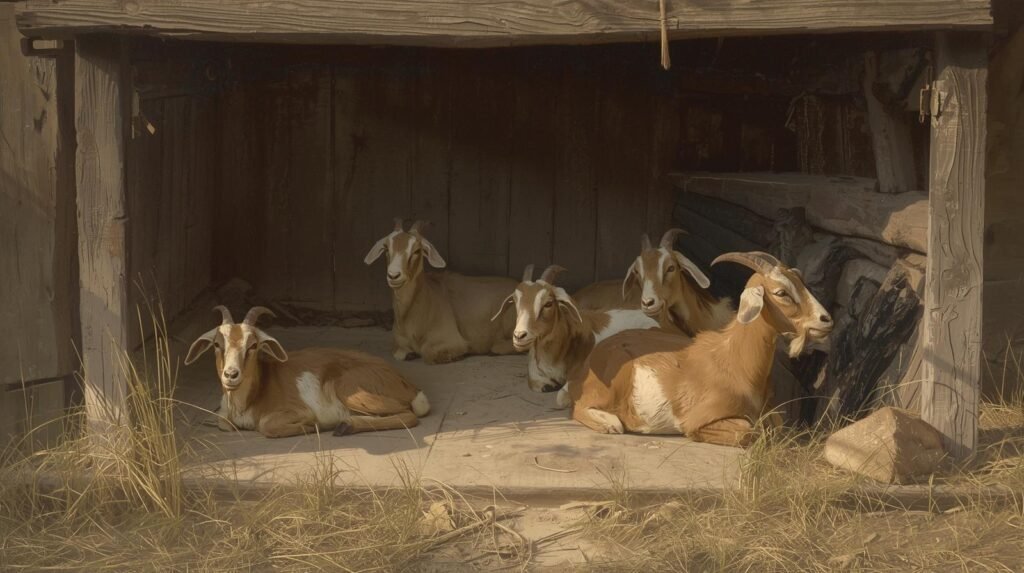
- Dry, draft-free shelter with good ventilation.
- Regular cleaning of bedding.
- Fencing that protects from predators and prevents escapes.
Observation
Spending a few minutes daily observing your goats is the best prevention tool. Early detection saves lives.
5. Common Goat Health Issues Beyond Parasites and Hooves
While parasites, hoof care, and vaccines are the “big three,” goat owners should also be aware of other common health problems.
Bloat
- Caused by overeating rich food (like fresh legumes or too much grain).
- Signs: Swollen left side, discomfort, kicking at belly, difficulty breathing.
- Prevention: Feed grain sparingly, introduce new foods gradually.
Pneumonia
- Triggered by sudden weather changes, poor ventilation, or stress.
- Signs: Coughing, runny nose, fever, rapid breathing.
- Prevention: Dry, draft-free shelters; reduce stress during transport.
Urinary Calculi (Stones)
- Mostly affects male goats.
- Caused by imbalanced minerals, especially too much grain.
- Signs: Straining to pee, dribbling urine, restlessness.
- Prevention: Provide the right calcium-to-phosphorus ratio (2:1) in diet.
6. Goat Health for Urban vs Rural Owners
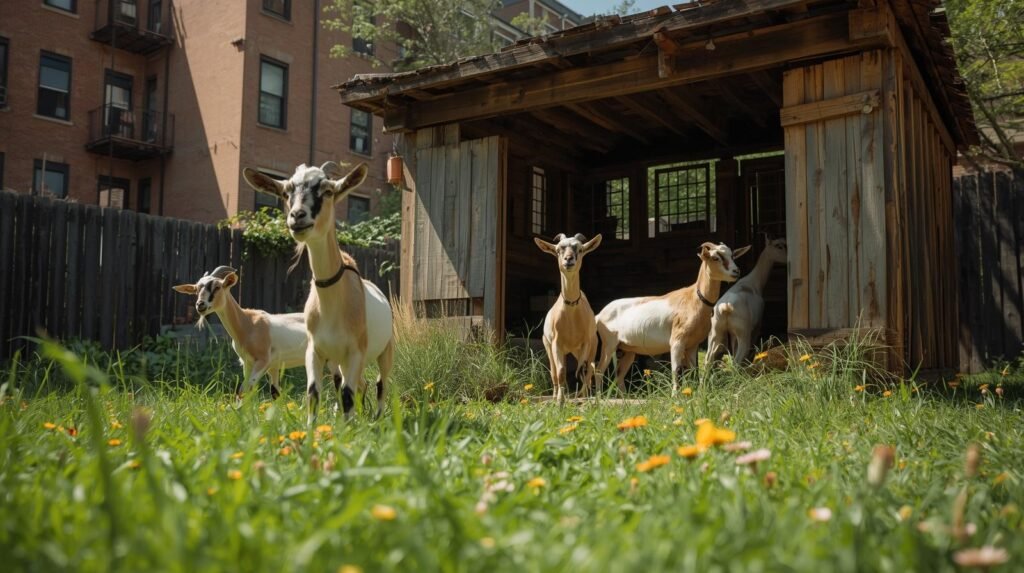
Urban/Backyard Goats
- Limited pasture → higher need for hay and minerals.
- Close neighbors → noise and odor control important.
- Smaller herds → easier to spot issues quickly.
Rural/Farm Goats
- Larger herds → routine health checks are crucial.
- Pasture management to reduce parasite load.
- More contact with wildlife → higher disease risk (e.g., rabies, ticks).
Both settings require the same basics: watch, prevent, and act early.
7. Creating a Simple Goat Health Routine
Here’s a sample routine for any goat keeper:
- Daily: Check eyes, appetite, droppings, behavior.
- Weekly: Feel body condition, inspect hooves, look for lice.
- Monthly: Trim hooves (if needed), check mineral supply, clean shelters.
- Seasonally: Rotate pastures, review parasite control, plan vaccinations.
- Yearly: Schedule CDT booster, review herd health with a vet.
Conclusion: Prevention is the Best Medicine
Goats thrive when their basic needs are met and small issues are caught early. By focusing on parasite control, regular hoof care, and timely vaccinations, you’ll set your herd up for long, healthy lives.
Whether you’re in an urban backyard or on a rural farm, the essentials remain the same: watch your goats closely, provide clean food and shelter, and don’t be afraid to call a vet when needed. Healthy goats mean happy owners, productive herds, and the joy of watching these incredible animals thrive.
